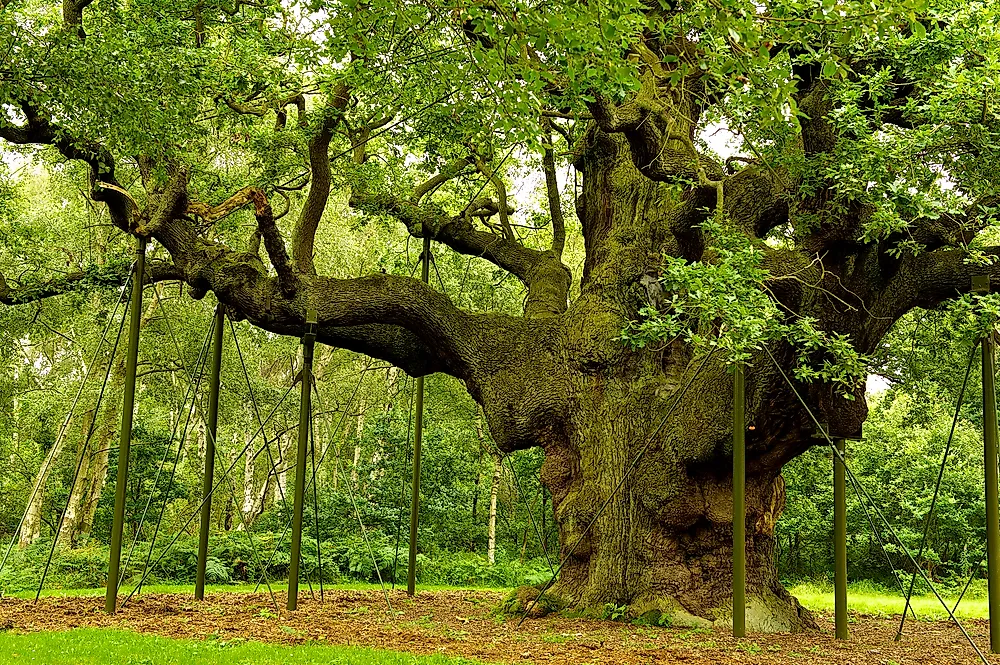What and Where is Major Oak?

Major Oak is a huge English oak which is located in the middle of Sherwood Forest (near Edwinstowe village), Nottinghamshire. The tree has a 92ft canopy, a 33ft girth and it is believed to be about 1,000years old. It is estimated to weigh about 23 tons. The Major Oak was voted as the tree of the year in England by a public poll organized by Woodland trust in 2014. It became the England’s favorite tree in the 2002 survey. The tree was not famous until 1760 when Major Hayman Rooke described it in his book. The tree was later named after him, in fact, the name Major Oak means ‘’Major’s oak’’ and not a ‘’large oak’’.
Why is the Major Oak Famous?
The tree is associated with Robin Hood’s tale. Robin Hood and his merry men are believed to have hidden in the tree. Due to a fungal infection, the inner part of the tree is hollowed. Robin Hood is believed to have used this hollowed part as his base during his many adventures of stealing from the rich and giving to the poor.
Why Is The Tree So Oddly Shaped?
There are numerous theories which explain why the Major Oak grew into its current shape and size. One of them claims that the Major Oak might be many trees fused together as saplings. It’s believed that there is a possibility that about four trees started growing close together and as young saplings, they merged, and as they matured, they created an enormous oak. The Major Oak has huge grooves which are visible from the outside, and its hollowed interior is various open chambers joined together.
Another theory suggests that the Major Oak was pollarded. Pollarding is a tree management system which allowed people to grow some timber on a single tree and this caused it to thicken and increase in size. Pollarding allowed the tree to grow longer than all the other unmanaged trees. There is no evidence of the Major Oak being Pollard since none of the other trees in the region were pollarded.
Conservation Of The Tree
The tree has been given special attention over the last century. In 1908 chains and straps were added on its canopy to support its weakest branches. It was later covered by some lead sheets to prevent rain from entering into the tree. Nottinghamshire council installed a fence around the Major Oak in 1975 to protect it from further damage caused by the ever-increasing number of visitors.
The council hired a tree company to help preserve the tree. The tree company removed the decaying branches, replaced some of the straps and chains, covered the gaping holes and applied an arboricultural paint coat to help stop further decay. During the mid-1980s supports were added to the tree to prevent sideways movements of its lower limbs. The grass which was initially grown for aesthetic reasons was removed in 1994 to prevent it from taking up all the soil nutrients.
A plantation was started in Dorset in 2003 of 230 saplings obtained from the Major Oak’s acorn. The primary purpose of the project was providing publicity for an internet-based study of the tree’s history, variation in leafing and size of the sapling, DNA comparison, and photographic records. In 2005 the tree was featured in the ‘’Seven Natural Wonders’’, a television program, as one of Midlands wonders.











